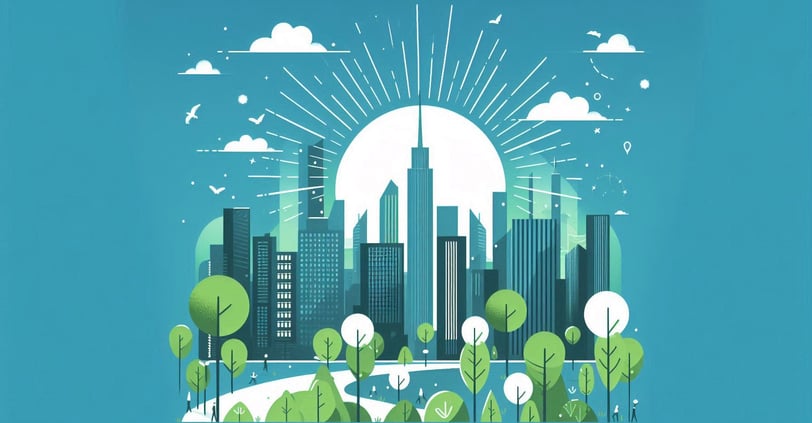The Future of Sustainable Living: A Blueprint for Tomorrow
As global challenges such as climate change and rapid urbanization intensify, the need for sustainable living has become more urgent than ever. The future promises a transformation in how we design, build, and inhabit our spaces. Here’s a glimpse into the innovative trends and technologies shaping a sustainable lifestyle for future generations.
SUSTAINABILITY
Hosam Zidan
11/20/20242 min read


1. Net-Zero Communities: Beyond Individual Buildings
The future of sustainability lies in creating entire net-zero neighborhoods. These communities generate as much energy as they consume by integrating renewable energy sources like solar, wind, and geothermal systems with energy-efficient designs. Shared resources, such as community solar farms and water recycling systems, will make sustainability accessible to all residents.
2. Renewable Energy at Every Scale
Advancements in energy storage and microgrid technology will empower homeowners and businesses to harness renewable energy more efficiently. Solar tiles, wind micro-turbines, and even algae-based bioenergy systems will become standard, reducing dependence on fossil fuels.
3. Biophilic Design: A Human-Nature Connection
Future homes and cities will prioritize biophilic design, which incorporates natural elements into architecture. Living walls, indoor gardens, and water features will enhance well-being, improve air quality, and reduce stress, all while integrating seamlessly with sustainable practices.
4. Zero-Waste Construction and Upcycled Materials
Construction is evolving into a waste-free industry. Prefabricated components, 3D-printed materials, and innovative recycling methods will dominate. Materials like reclaimed wood, recycled steel, and even construction byproducts like ash will create durable, eco-friendly buildings.
5. Climate-Resilient Designs
As extreme weather events become more frequent, sustainable architecture will adapt to withstand these challenges. Passive cooling strategies, flood-resilient structures, and self-healing materials will ensure durability while reducing the environmental footprint of repairs and replacements.
6. AI-Driven Resource Optimization
Artificial intelligence will revolutionize resource management in homes and cities. Smart systems will monitor and optimize energy, water, and waste use, ensuring efficiency without human intervention. Predictive maintenance powered by AI will also extend the lifespan of buildings and infrastructure.
7. The Rise of Circular Living
The circular economy will extend beyond construction into everyday life. Homes will be equipped with composting units, in-house recycling stations, and systems for transforming waste into energy or reusable products. This closed-loop approach will significantly reduce landfill contributions.
A Vision for the Future
At hz studio, we envision a future where sustainable living is the norm, not the exception. By combining innovative technologies with timeless principles of eco-friendly design, we aim to create spaces that inspire harmony between people and the planet.
The path to sustainable living is a collective journey. With bold ideas and a commitment to change, we can build a world where both nature and humanity thrive together.


